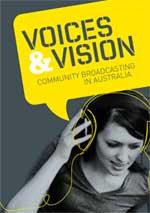
Voices & Vision All About Community Broadcasting
Community broadcasting has helped shape the media landscape in Australia. It’s recognised internationally as one of the most successful examples of grassroots media.
It distinguishes itself from other media by providing the local community with access and participation in media production and management. Localism and independence are defining features.
Community broadcasting provides news, information, cultural content and entertainment to communities defined by geographical location or common interest, including Indigenous, specialist music, ethnic, educational, youth, religious and print disabled.
Australia’s community media sector is known for its size and reach. The vast number of stations spread across the country form a network that rivals commercial and public broadcasters. For many communities it is the only media producing local content in their area.
Reflecting Australia’s immense cultural and linguistic diversity, it creates an array of services and programs, and broadens the media choices available to all of us.
Community broadcasting is taking every opportunity to expand into new online and free-to-air digital platforms. Our skills and experience working on the ground in diverse communities are providing unique and exciting contributions to the digital economy.
Facebook comments